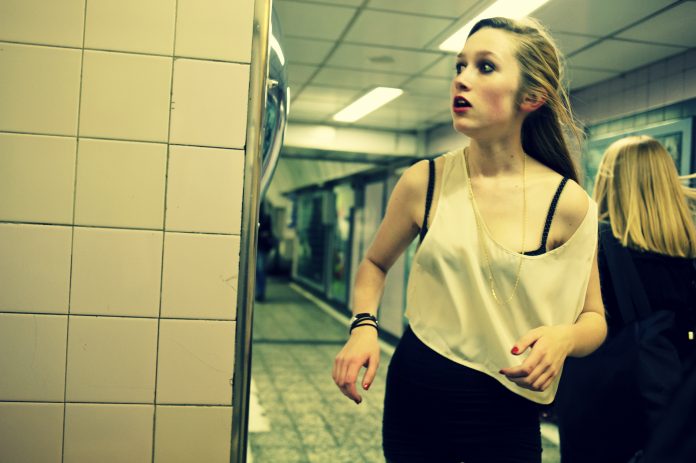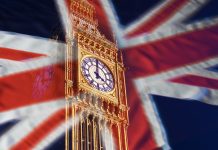The Voyeurism Offences Act 2019 has been made into UK law: Read on for an analysis of the changes to your rights, and the legal loopholes that existed before today
The new Act was originated in June 2018, and comes into force today to amend the Sexual Offences Act of 2003. It adds clear and explicit protection against the offence in the eyes of the UK legal system.
What is upskirting?
Upskirting is a newer form of sexual abuse.
The offender takes a photo under another person’s clothing without their awareness or permission. Often, they are looking to voyeuristically observe their genitals or buttocks – but uniquely, the taking of the photo is part of their gratification. It is the humiliation, assertion of power and lack of legal protection that make this offence so dehumanising for those who experience it. It happens on public transport, in bathrooms with hidden cameras, in schools and workplaces.
The Ministry of Justice described the exact act below:
“The Voyeurism (Offences) Act 2019 creates 2 new offences criminalising someone who operates equipment or records an image under another person’s clothing (without that person’s consent or a reasonable belief in their consent) with the intention of viewing, or enabling another person to view, their genitals or buttocks (with or without underwear), where the purpose is to obtain sexual gratification or to cause humiliation, distress or alarm.”
Young girls as old as seven have been victims of this practice.
The prominent activist Gina Martin (whose work led to the implementation of the law today), was attending a festival when two men took photos of her crotch area without her awareness. Her case tapered off into nothing – the legal framework to identify this new sexual offence had loopholes, which led to the police dismissing this violation.
Chris Green OBE, Founder and President of White Ribbon UK said,
“Large social media organisations such as twitter have a responsibility to stand with women. White Ribbon UK urges social networking sites to take the lead in respecting women’s privacy and acknowledging the importance of consent by blocking unconsented images such as ‘upskirting’ etc.”.
What does this new law mean?
The offences will be triable and carry a maximum 2-year prison sentence.
Any acts of upskirting that happened before the law was implemented today will not be prosecutable.
An attempt to take an upskirting photo will be taken seriously under The Criminal Attempts Act 1981. Anyone who even tries to take a photo, but doesn’t end up with one (e.g. maybe their phone did not have space for an image, but they clicked the button, or maybe their camera was glitching in that moment) will be charged with attempt to commit an act of upskirting.
The offenders could be entered into the UK Sexual Offender’s Register, if their upskirting attempt is enacted to “obtain sexual gratification”. However, if the upskirting image is taken to cause humiliation or distress, they will not be labeled a Sex Offender.
The individual who has reporting the upskirting photo will be subject to lifetime protection in the form of reporting restrictions – the media cannot circulate their names, identities or any significant details that would reveal who they are.
This ban on identification is a normal rule for people who file reports on sexual violations, suggesting that the UK is framing upskirting as a serious and dangerous issue.
Why was upskirting not a crime before?
The crime was covered by a loose overlap of three other laws:
- Outraging Public Decency
- Sexual Offences Act 2003 (voyeurism offences)
- And for children, Protection of Children Act 1978.
Whilst some had been prosecuted under the laws that exist, there were blindspots that meant many did not attempt to see their case go through the courts.
For example, the Outraging Public Decency offence required at least two people to have
witnessed the act or to be capable of witnessing it, in a public space. This was not straightforward or even possible in most upskirting scenarios – the act of taking this photo is normally secretive, furtive and done to avoid public attention.
On a public bus or train, how many of us are attentively watching what another person is doing? And then how many more from that number are willing to give testimony? And how do we find those individuals?
Instances of upskirting that happened in a public place could still be prosecuted under the Outraging Public Decency offence, and those that occurred in a private place might have been covered by existing voyeurism offences. But schools and workplaces, key areas for this offence, were not covered due to the legal definition of ‘public place’ ruling them out.
There was an attempted reform on the 15th June, 2018, in which the Bill to create the Voyeurism Act made it to the second reading in parliament. There was one objection by Conservative, Sir Christopher Chope, who shouted “object” as he does for all private member bills as part of some personal morality that did not translate to the room.
Hugely disappointed to see a colleague block a bill to protect women from so-called ‘upskirting’ today. No woman should ever face such an abhorrent act with no recourse to prosecution. Completely unfathomable.
— Caroline Nokes (@carolinenokes) June 15, 2018
Liberal Democrat Wera Hobhouse had secured enough support to make upskirting jailable, but the process was then majorly delayed. Prime Minister Theresa May later distanced her party from the objection, saying she was “disappointed.”
After the changes to the law today, prosecutions for upskirting could significantly increase if the stigma of sexual assault is also addressed.











